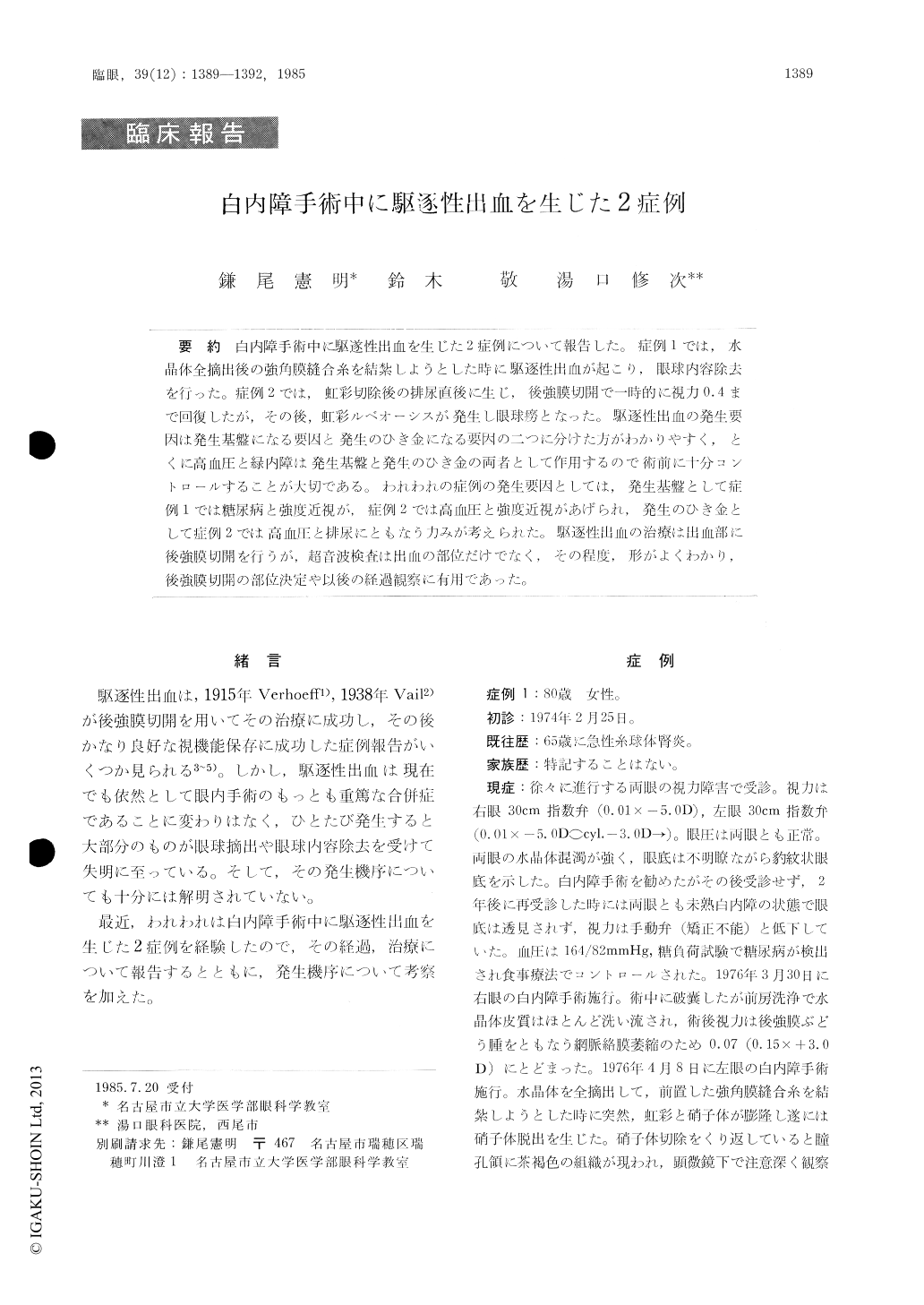Japanese
English
- 有料閲覧
- Abstract 文献概要
- 1ページ目 Look Inside
白内障手術中に駆遂性出血を生じた2症例について報告した.症例1では,水晶体全摘出後の強角膜縫合糸を結紮しようとした時に駆逐性出血が起こり,眼球内容除去を行った.症例2では,虹彩切除後の排尿直後に生じ,後強膜切開で一時的に視力0.4まで回復したが,その後,虹彩ルベオーシスが発生し眼球癆となった.駆逐性出血の発生要因は発生基盤になる要因と発生のひき金になる要因の二つに分けた方がわかりやすく,とくに高血圧と緑内障は発生基盤と発生のひき金の両者として作用するので術前に十分コントロールすることが大切である.われわれの症例の発生要因としては,発生基盤として症例1では糖尿病と強度近視が,症例2では高血圧と強度近視があげられ,発生のひき金として症例2では高血圧と排尿にともなう力みが考えられた.駆逐性出血の治療は出血部に後強膜切開を行うが,超音波検査は出血の部位だけでなく,その程度,形がよくわかり,後強膜切開の部位決定や以後の経過観察に有用であった.
We observed expulsive hemorrhage during intra-capsular cataract surgery in 2 cases during a 10-year-period. In the first case, a 80-year-old female, it occurred just after lens extraction. Evisceration of the eyeball was necessary to save the situation. High myopia and diabetes mellitus appeared to be the major contributing factors. The second case was a 54-year-old male who was myopic, had lost his fellow eye due to retinal detachment, and was suffering from systemic hypertension for the past 20 years. The lens and the iris started to bulge forward when, just after corneoscleral incision and peri-pheral iridectomy, the patient urinated. After lens extraction, a dark mass was seen in the vitreous. Postsurgically, probable expulsive hemorrhage was detected by echography. Posterior sclerotomy was immediately performed. The visual acuity recovered to 0.4 after retinal detachment surgery. The eye was finally lost due to recurrent intraocular hemorrhage and rubeosis iridis. Systemic hypertension and high myopia seemed to be major underlying causes.The findings indicate that expulsive hemorrhage is still a possibility in spite of advanced techniques in intracapsular cataract surgery.

Copyright © 1985, Igaku-Shoin Ltd. All rights reserved.


